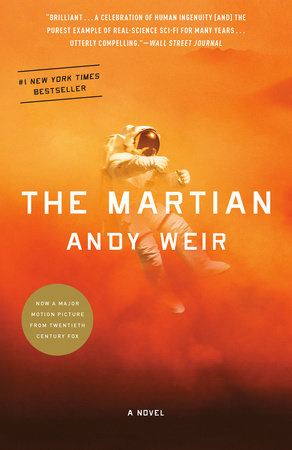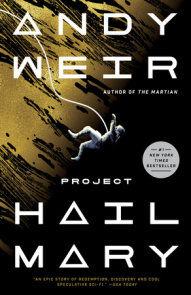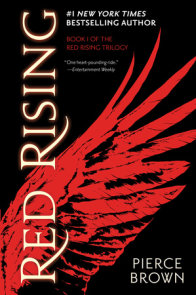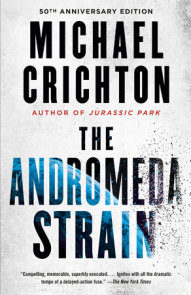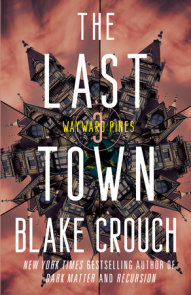TEACHING GUIDE
NOTE TO TEACHERS
Set in the not-so-distant future, The Martian tells the story of astronaut Mark Watney, who is stranded on Mars after a mission failure leads his crew and NASA to assume he is dead. Using his background in botany and engineering, Watney must find a way to survive until he can contact NASA and they can arrange a rescue mission. Once NASA realizes that Watney is, in fact, alive, a race begins to save his life. Students may also be interested in Andy Weir’s essay at Salon.com: “How Science Made Me a Writer.” (http://tinyurl.com/ljdcskr)
DISCUSSION QUESTIONS AND ACTIVITIES:
1. In the first chapter of the book, Weir describes the mission that stranded Mark Watney on Mars. Examine the technology mentioned in this chapter. What has kept us from carrying out manned space flights to Mars? Describe the requirements of this type of mission. How close are we to having the technology to send astronauts to Mars?
2. Explain the mechanism that Watney uses to keep track of time. Why does it make sense to mark time in Sols rather than days? How long is one Sol? 3. Examine the calculations that Watney uses to determine the amount of resources it will take in order for him to survive. Do you agree with his calculations? Explain your answer.
4. Examine the chemical process that Watney uses to create water from hydrogen and oxygen (pages 24–27). What makes this process especially dangerous? What mistake does Watney make in his calculations (pages 45–47)?
5. Research the various sources of energy Watney uses over the course of the novel (for example: solar cells, radioisotope thermoelectric generators, ion engines, rechargeable batteries). What are the risks and benefits associated with the various sources of energy?
6. Because of Watney’s creative modification of equipment in order to survive (for example, see pages 258–259 and 300-301), Weir’s novel has drawn comparisons to the true story of the Apollo 13 mission. Research the technology and engineering that was used in the Apollo 13 mission and rescue. As a project, develop a workable plan (or model) that uses components of an existing device for a completely new function (the website Instructables may give you some ideas). View this brief scene from Apollo 13 for inspiration (http://tinyurl.com/A13clip )
7. Explain the challenges that Watney faces in attempting to develop agriculture on Mars. Why are bacteria a necessary component of soil used for agriculture? How does Watney solve the initial problems that he encounters?
8. You may be familiar with the Academy Award-winning film Gravity, which is also a story about an astronaut’s attempt to survive and return to Earth after a mission failure. Read one of the articles examining the science in the film (such as this one from the The Washington Post: http://tinyurl.com/WP-Gravity). Choose a moment in The Martian that you found particularly compelling or interesting and conduct similar research about the science that is referenced in the section. Based on your research, do you think the aspect of Watney’s story that you selected could really happen?
9. Throughout the novel, Mark Watney finds numerous ways to modify and utilize the crew’s EVA suits. Research the engineering of EVA suits. What purposes do they serve? What materials are they made of? What unique challenges did scientists face when they designed EVA suits? How have they changed with technological advances? You may wish to begin your exploration at NASA’s interactive spacesuit page at: http://tinyurl.com/os2ldp9.
10. Explain the physics behind the failure of the Iris launch (pages 187–191).
11. Explain the physics behind Mark Watney’s mistake that caused Pathfinder to lose power (pages 224–228).
12. In order to navigate on Mars, Watney builds a homemade sextant (288). Explain how a sextant functions, then build your own sextant and test it to see if it works.
13. Explain how Mark Watney figures out that there is a dust storm on Mars. How does he use observation to figure out the direction and speed of the storm? Why is this information critical?
14. Explain the chemical process that Watney uses to turn water into rocket fuel (pages
335–336).
15. Explain the laws of physics involved in Watney’s final launch and connection with the rescue team.
LAB CONNECTIONS
Chemical Reactions, Engineering, and Physics
CORRELATES TO COMMON CORE STANDARDS
SCIENCE & TECHNICAL SUBJECTS: Key Ideas & Details RST.9-10.1, 9-10.2; Craft & Structure RST.9-10.4, 9-10.5, 9-10.6; Integration of Knowledge & Ideas RST.9-10.8, 9-10.9; Writing Text Types and Purposes WHST.9-10.2a-f; Production & Distribution of Writing WHST.9-10.4, 9-10.5, 9-10.5; Research to Build & Present Knowledge WHST.9-10.7, 9-10.8, 9-10.9; Range of Writing WHST 9-10.10
ANCHOR STANDARDS: Reading Key Ideas & Details CCRA.R.1, CCRA.R.2; Integration of Knowledge & Ideas CCRA.R.9; WRITING: Text Types & Purposes CCRA.W.2; Production & Distribution of Writing CCRA.W.4, W.5, W.6; Research to Build & Present Knowledge CCRA.W.7, W.8, W.9; LANGUAGE: Vocabulary Acquisition & Use CCRA.L.4, L.6; Speaking & Listening Comprehension & Collaboration CCRA.
SL.1; Presentation of Knowledge & Ideas CCRA.SL.4
TITLES LINKED TO CCSS SCIENCE AND TECHNICAL SUBJECTS
OTHER TITLES OF INTEREST
An Astronaut’s Guide to Life on Earth by Chris Hadfield
Postcards from Mars by Jim Bell
Tunnel in the Sky by Robert Heinlein
Red Mars by Kim Stanley Robinson
FILM CONNECTION
Apollo 13 (1995) directed by Ron Howard
Gravity (2013) directed by Alfonso Cuarón
×
Become a Member
Just for joining you’ll get personalized recommendations on your dashboard daily and features only for members.
Find Out More Join Now Sign In






